Abstract
1. The Nagel anomaloscope, neutral points and dichromatic matches to a spectral green light identified a population of seventy red-green dichromats. 2. The anomaloscope settings allow the calculation of the relative action spectrum of the match at the wave-length of the red (645 nm) and green (535 nm) primaries. The distribution of this ratio is bimodal; there are two clusters with a gap of about 0-75 long units between. Among the thirty-eight deuteranopes there are wide differences in anomaloscope matches; similar differences appear among the thirty-two protanopes. 3. Retinal densitometry of the foveas of fifteen of the deuteranopes is compared and contrasted with measurements on trichromats. In the former, only one photolabile pigment is found in the red-green region of the spectrum; normals always have two. The view of Rushton (1965a) that deuteranopes have erythrolabe but no measurable chlorolabe is confirmed for each member of this group. 4. Simple deuteranomalous show two red-green cone pigments. The difference spectra of extreme deuteranomalous are very similar to those found in deuteranopia. 5. Individual differnce in kinetics (photosensitivity, time constant of regeneration) and in the density and lambdamax of the difference spectrum of erythrolabe in deuteranopia are appreciable; the reasons for these differences are not clear.
Full text
PDF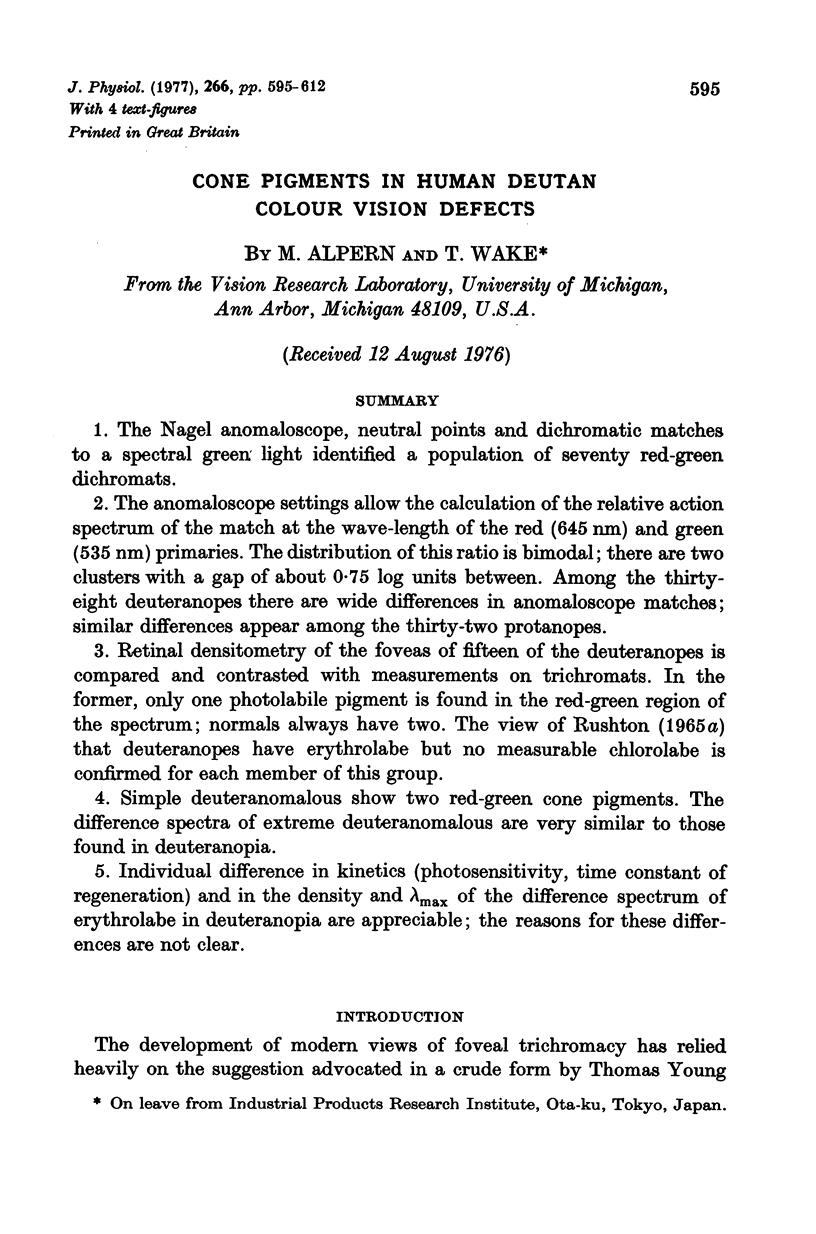
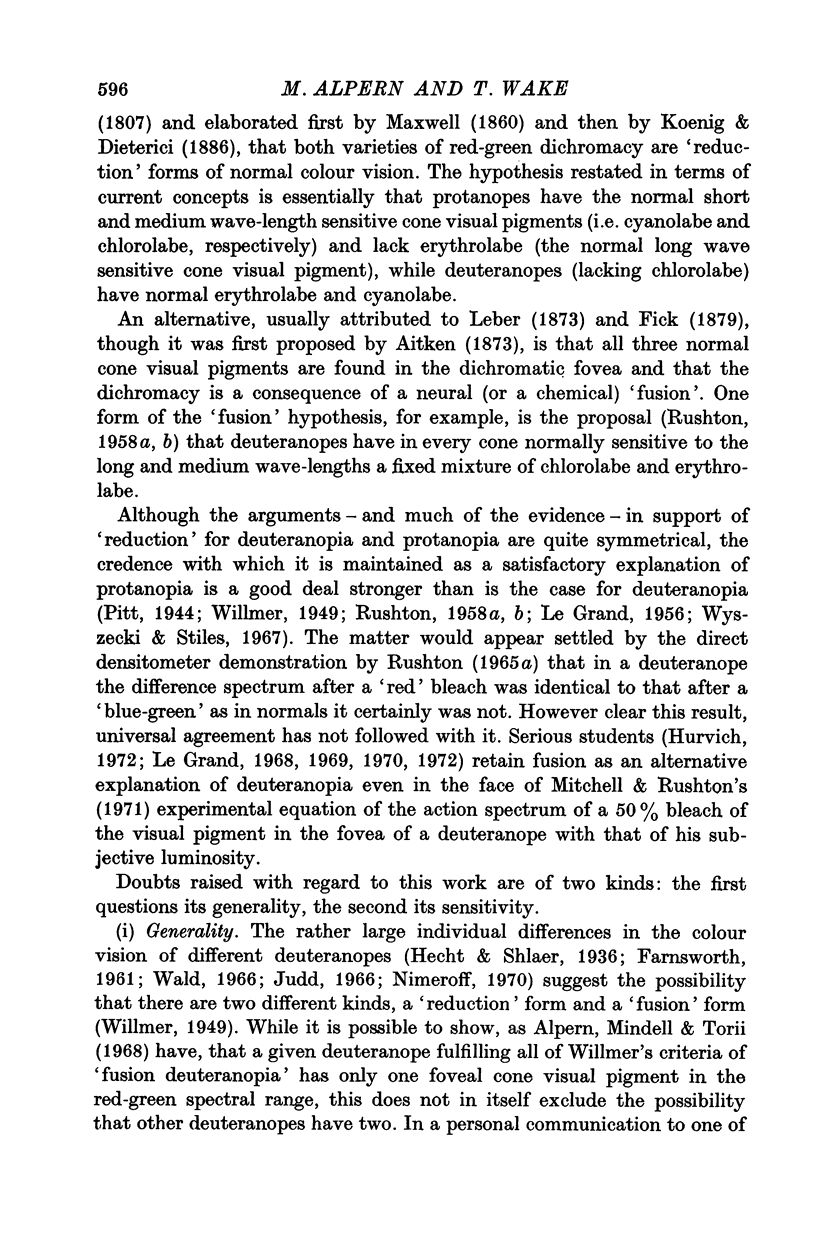
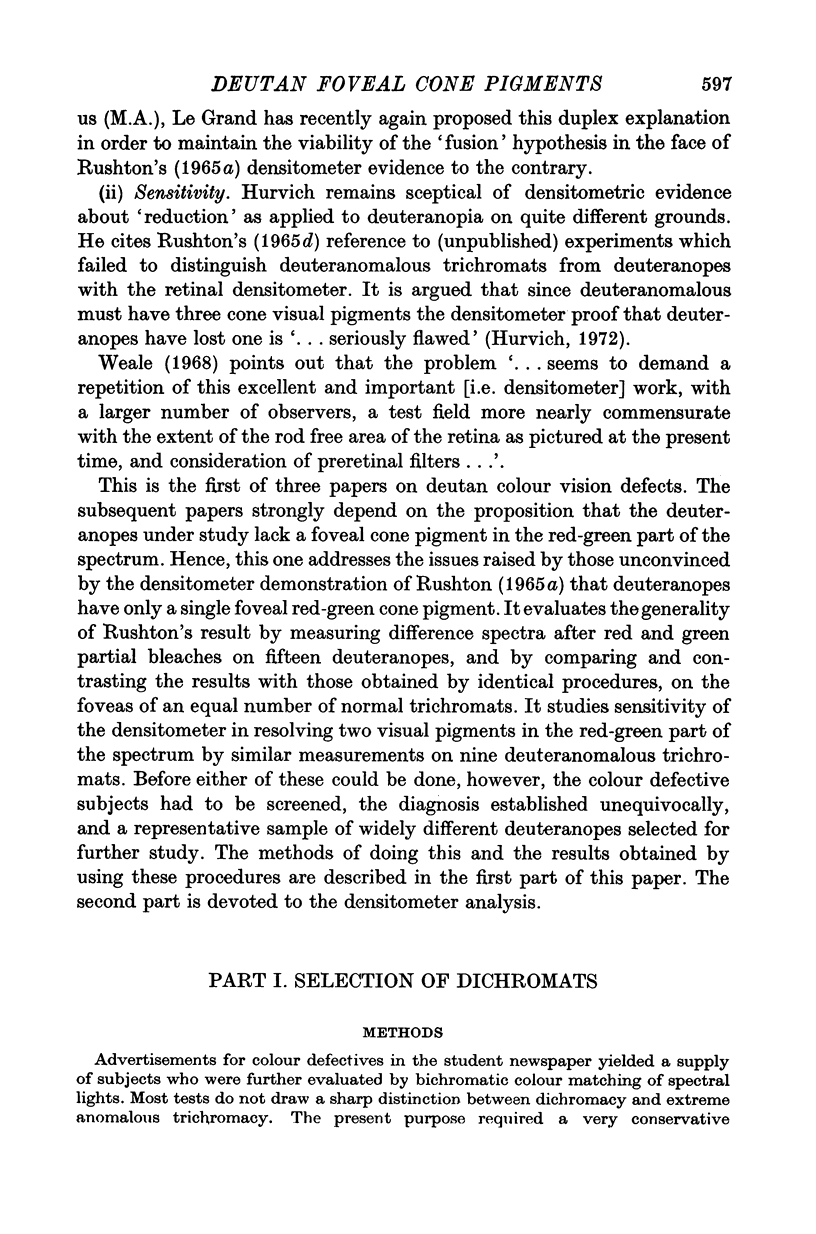
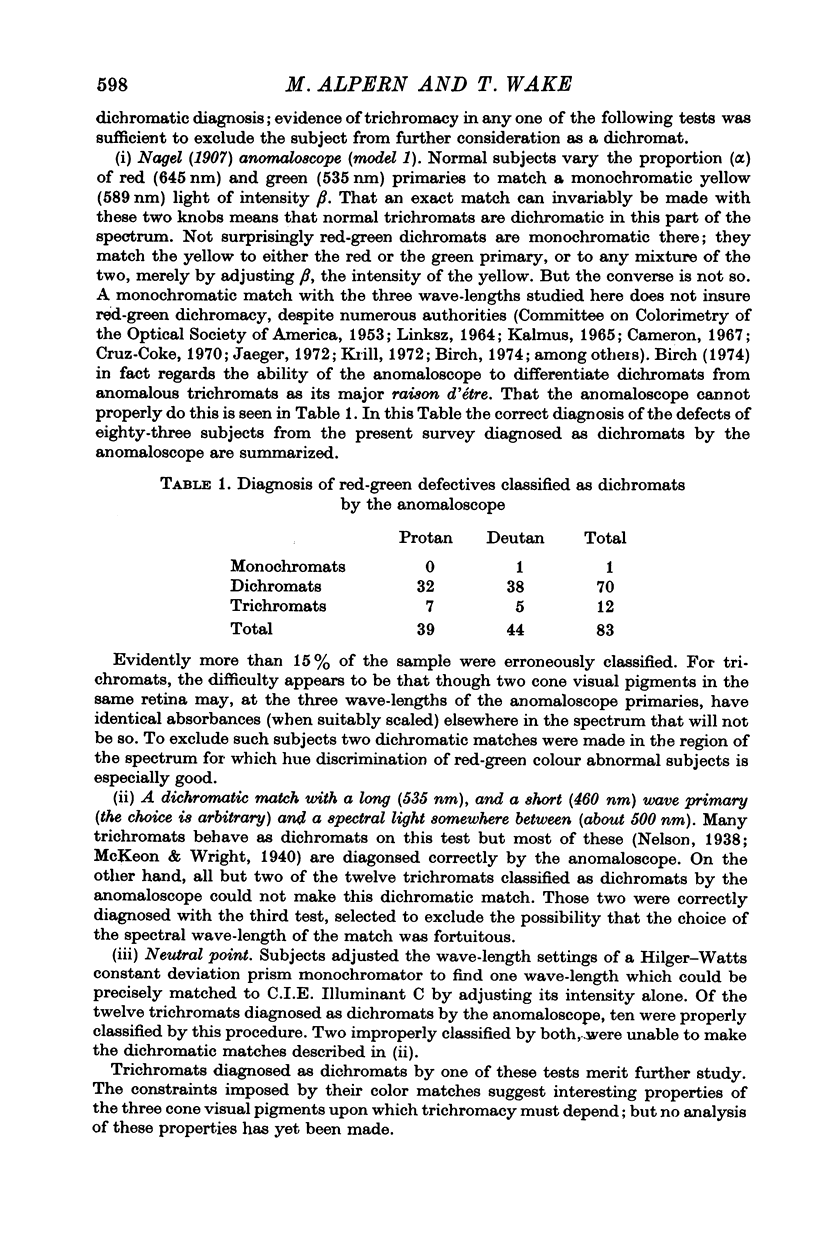
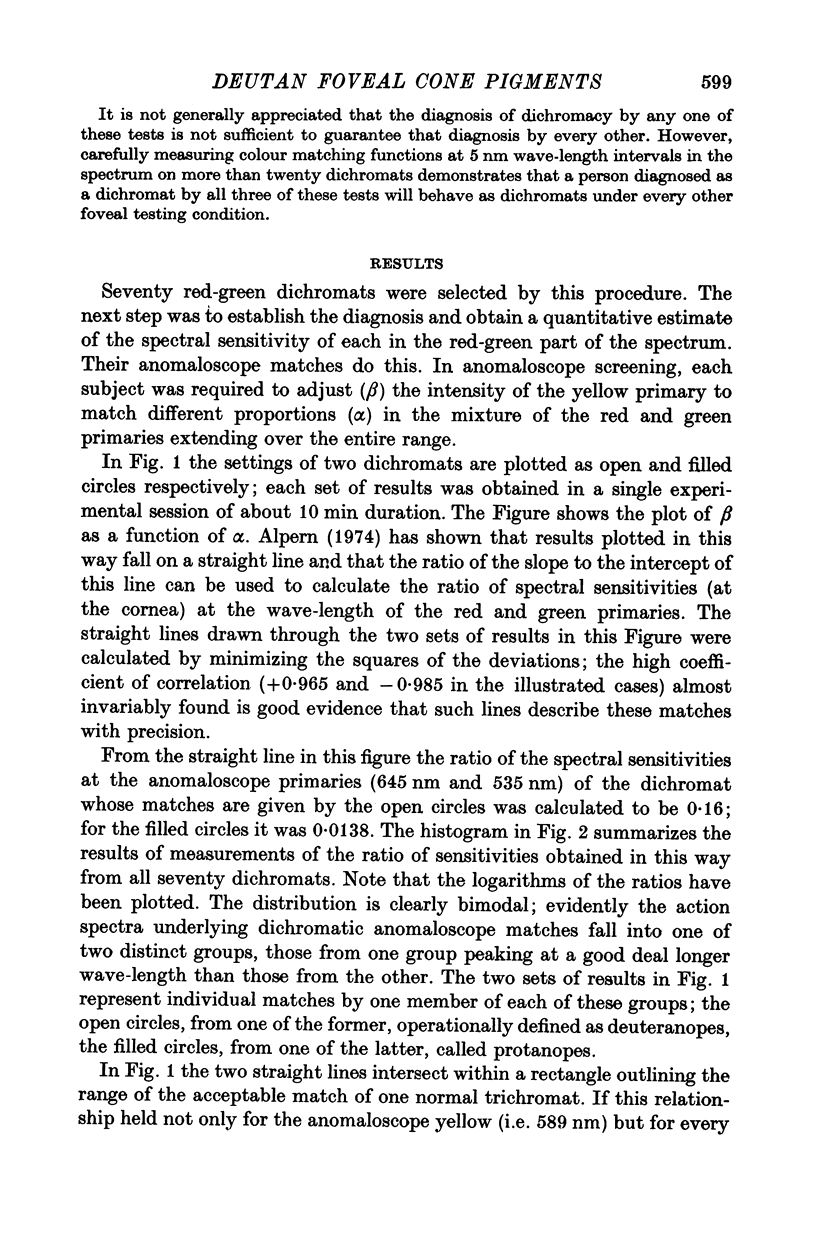
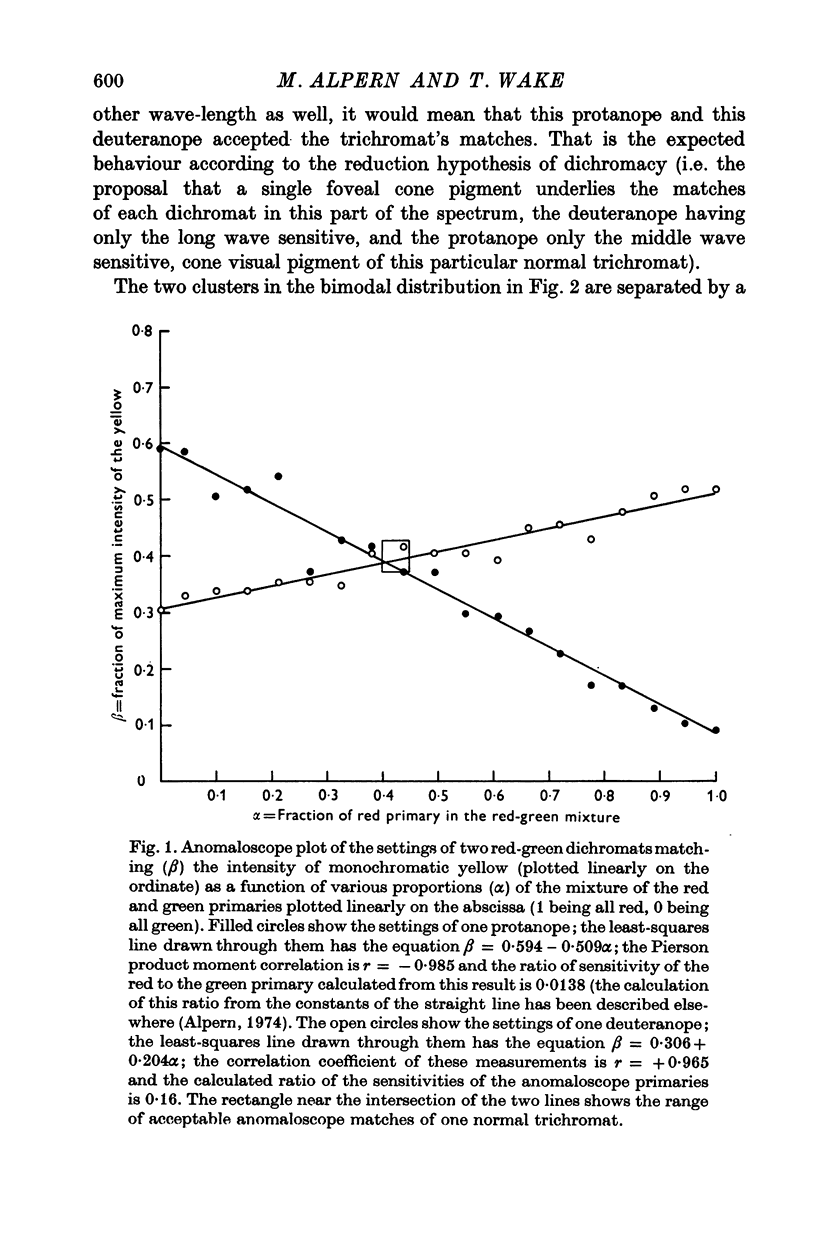
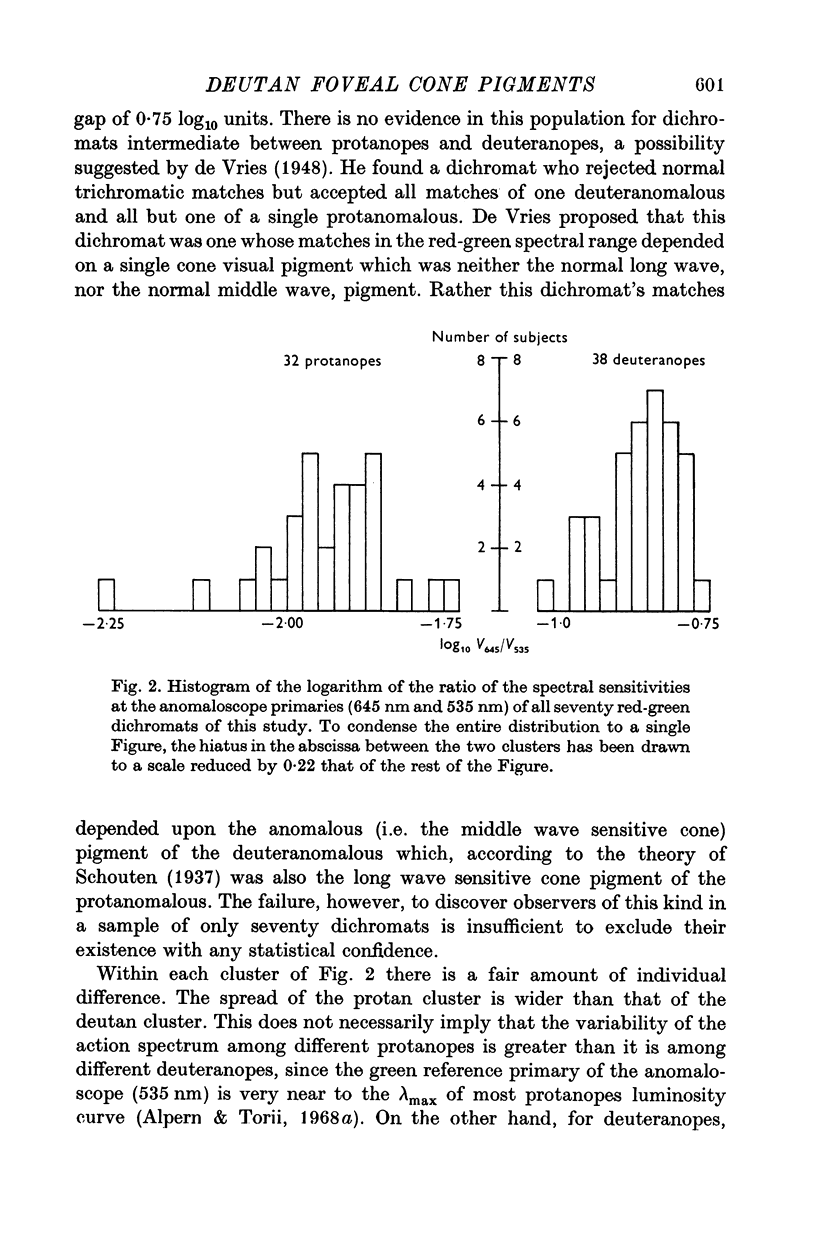
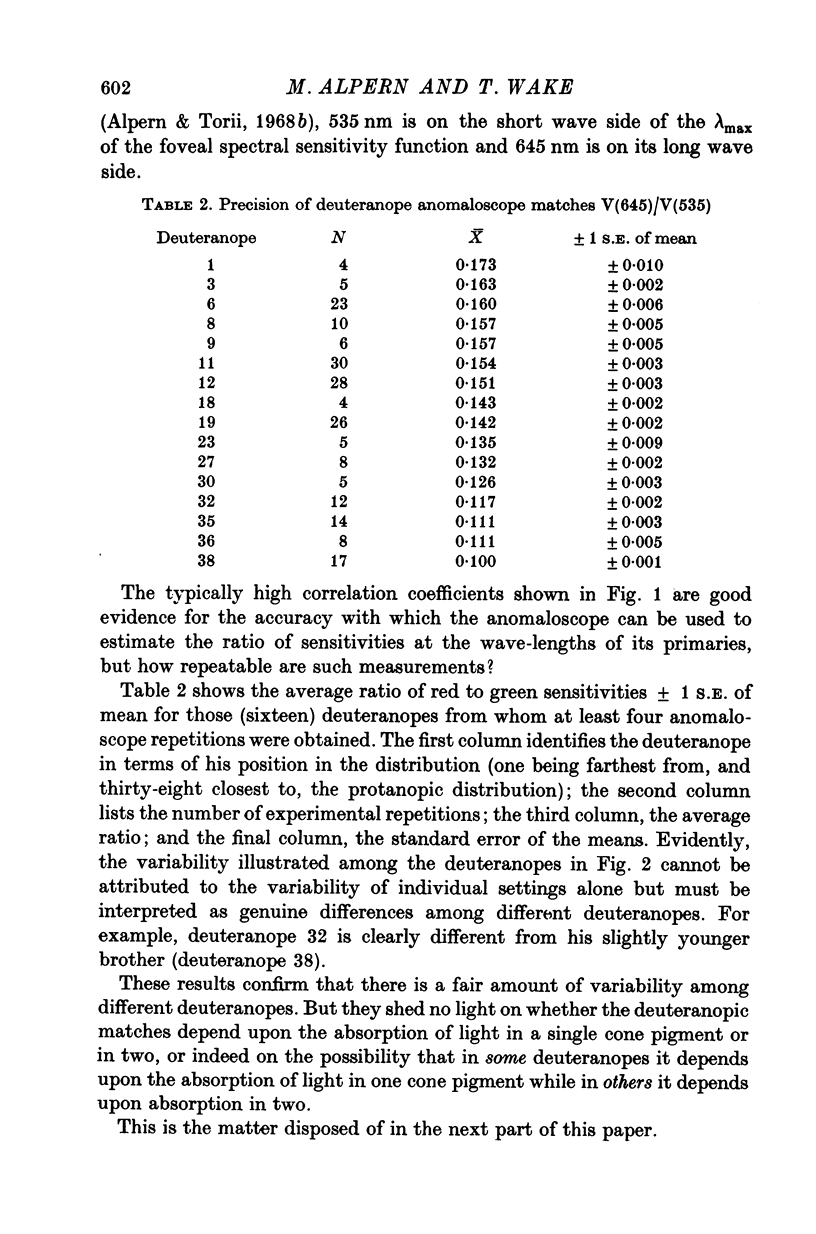

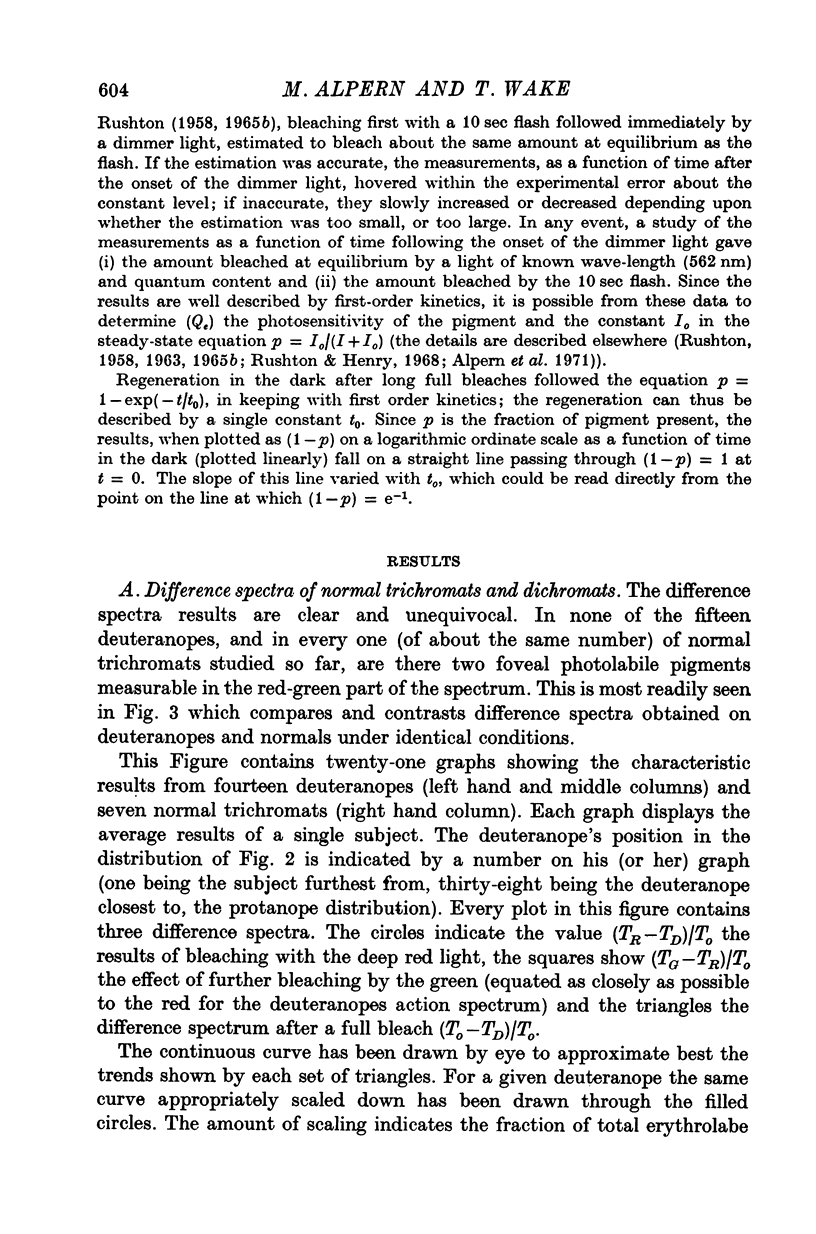
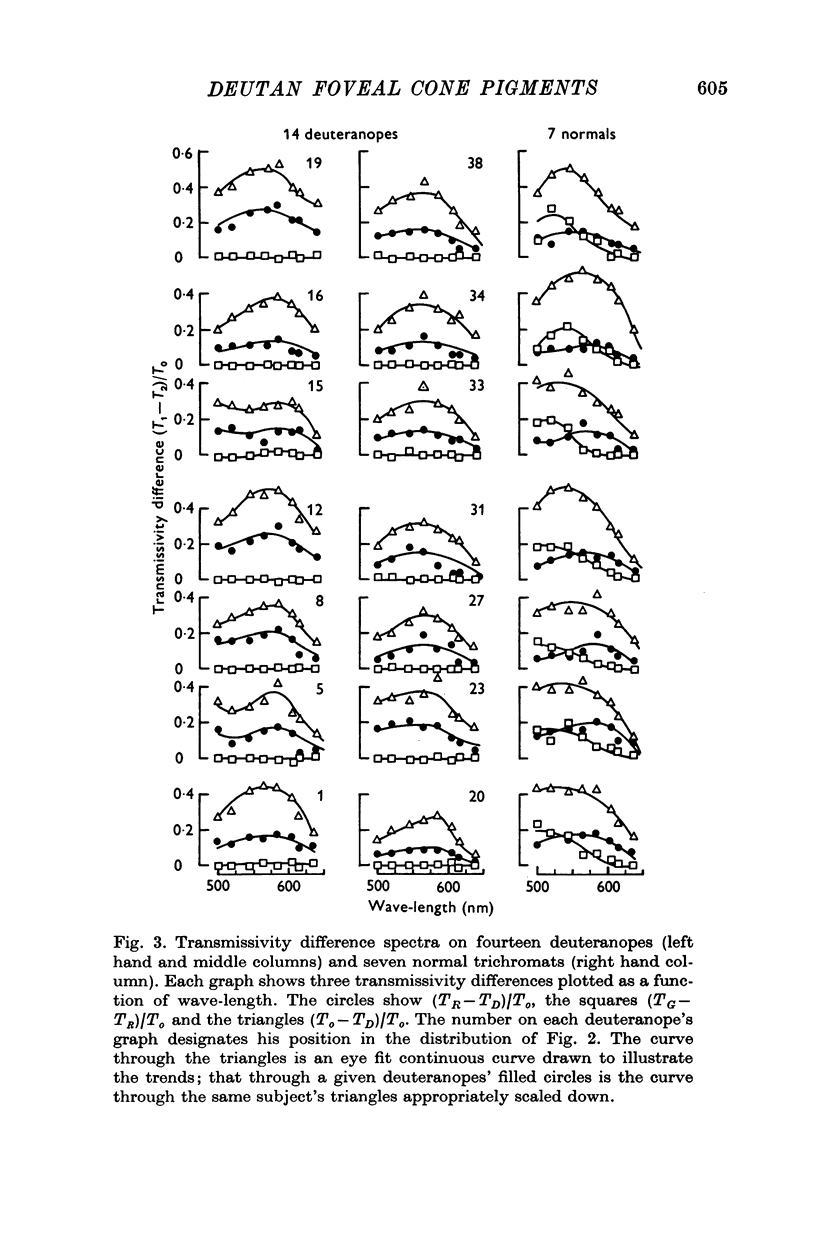
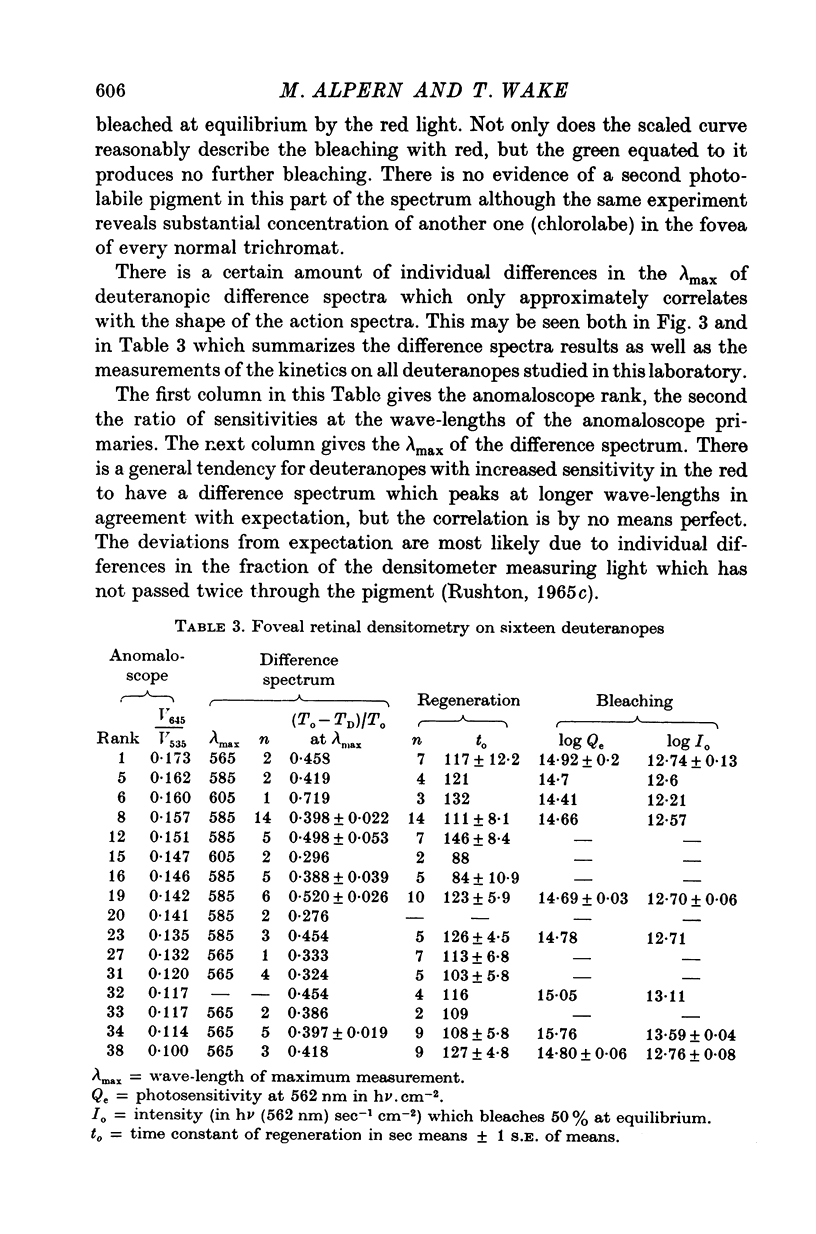
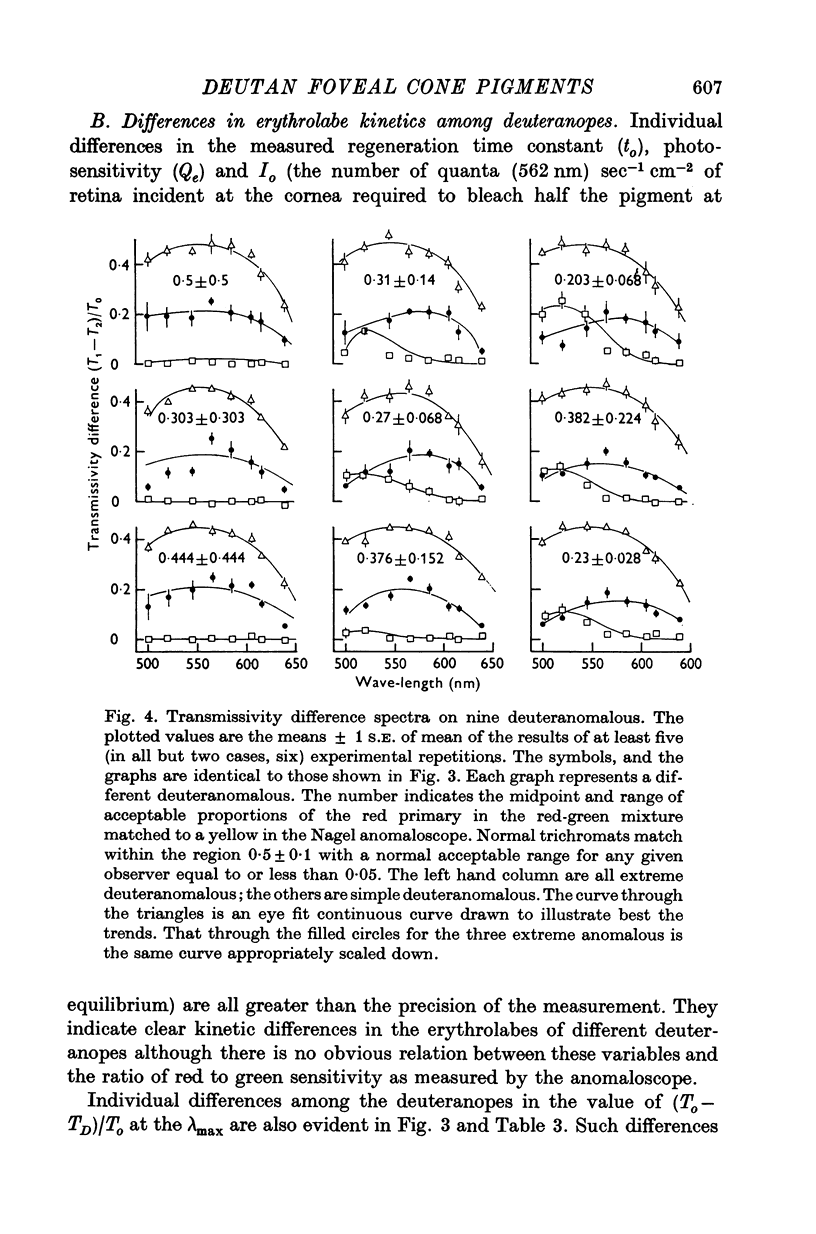
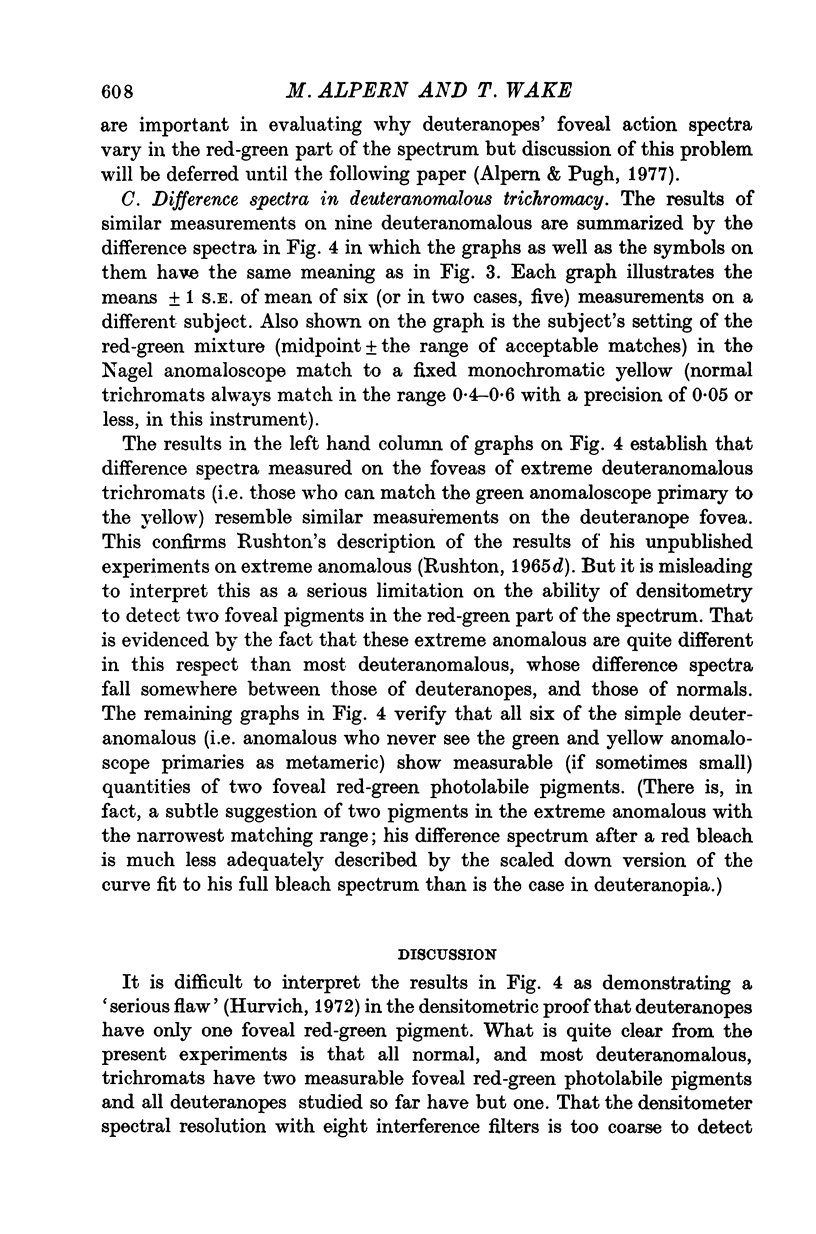
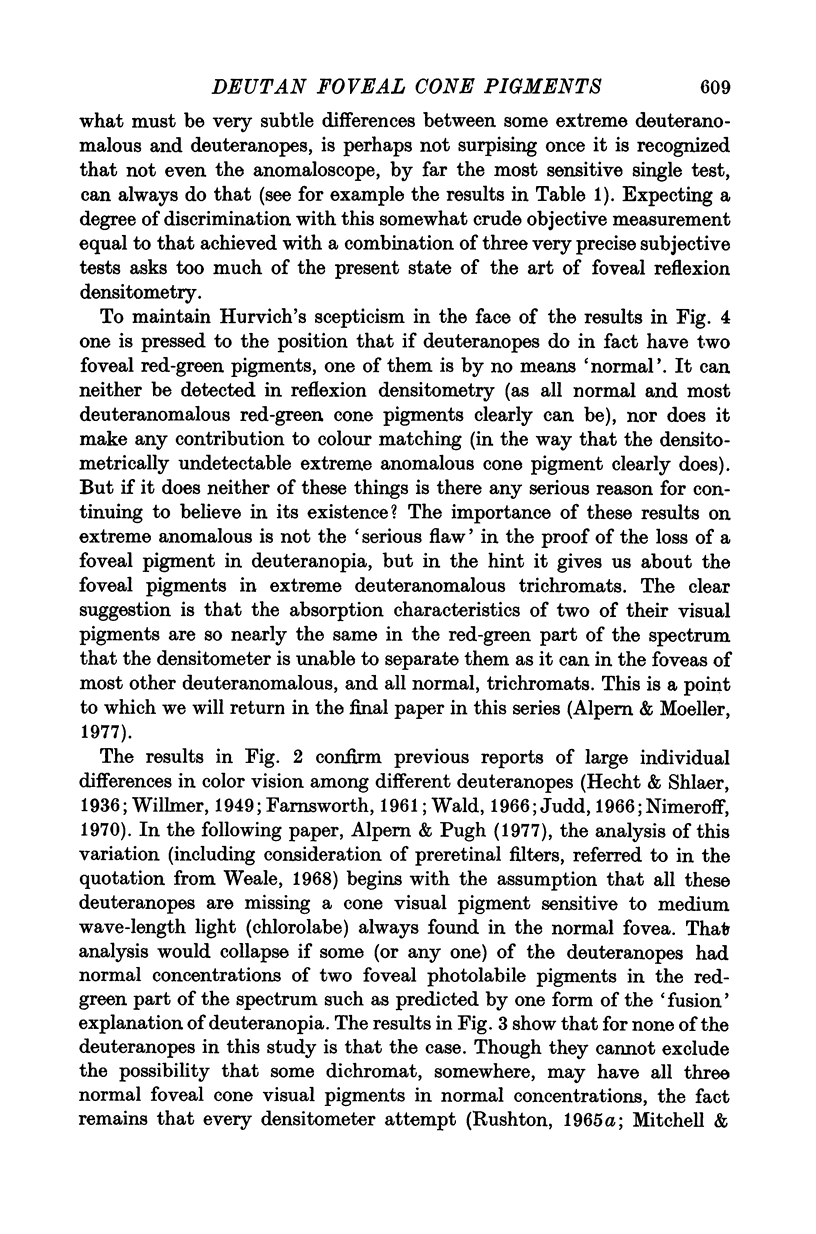
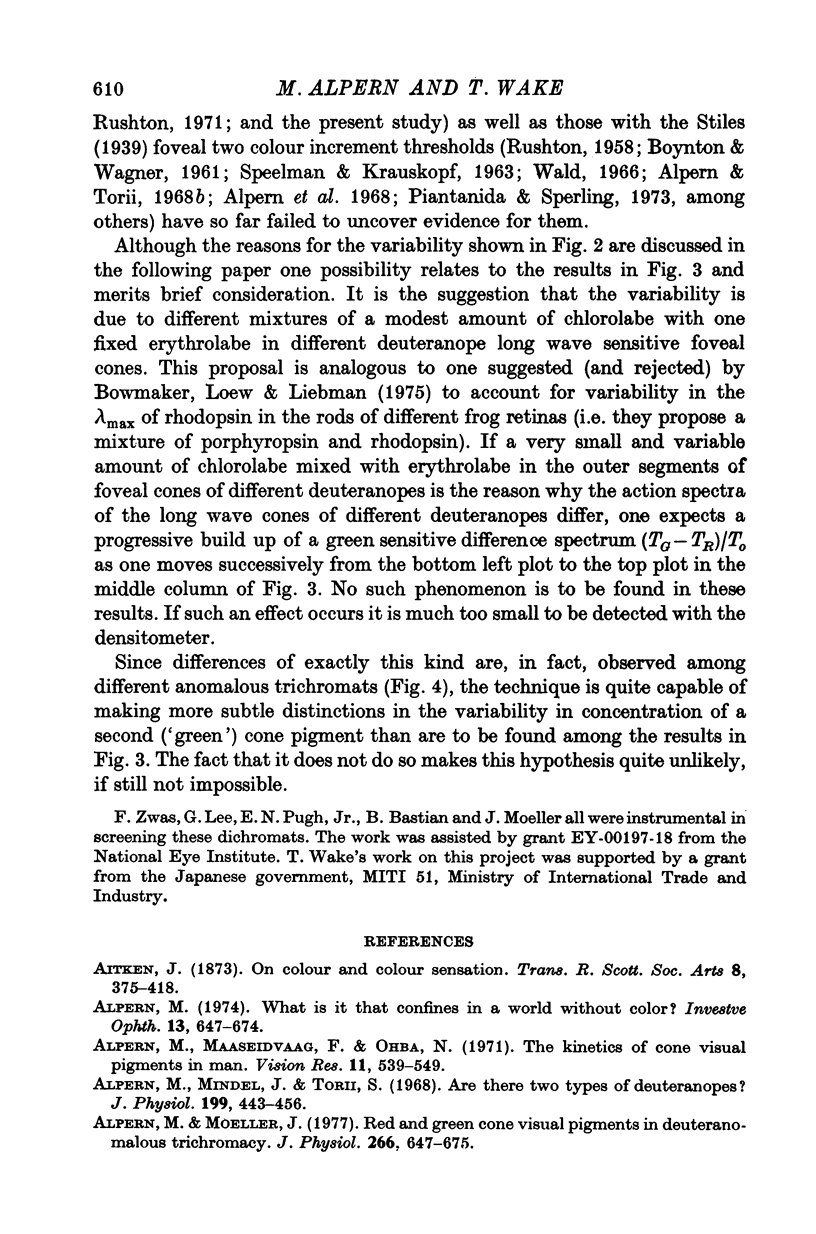
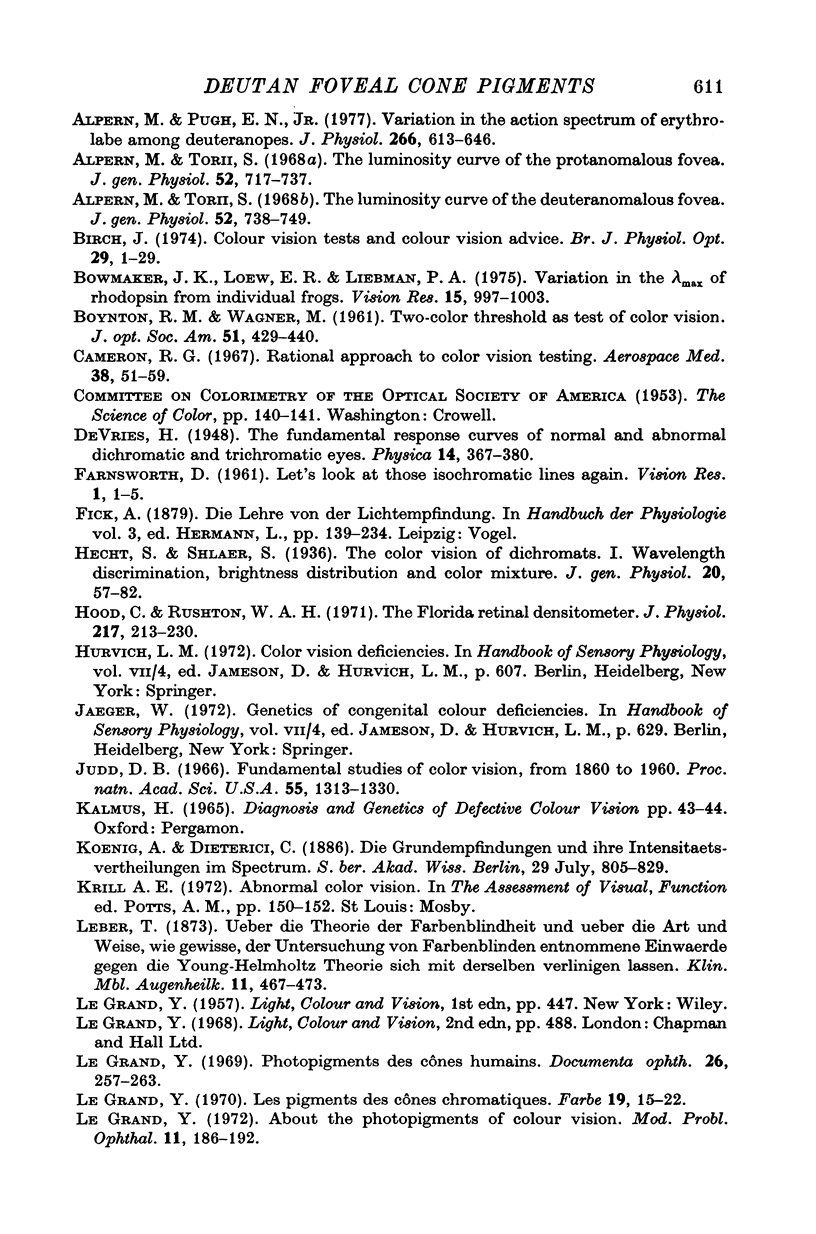
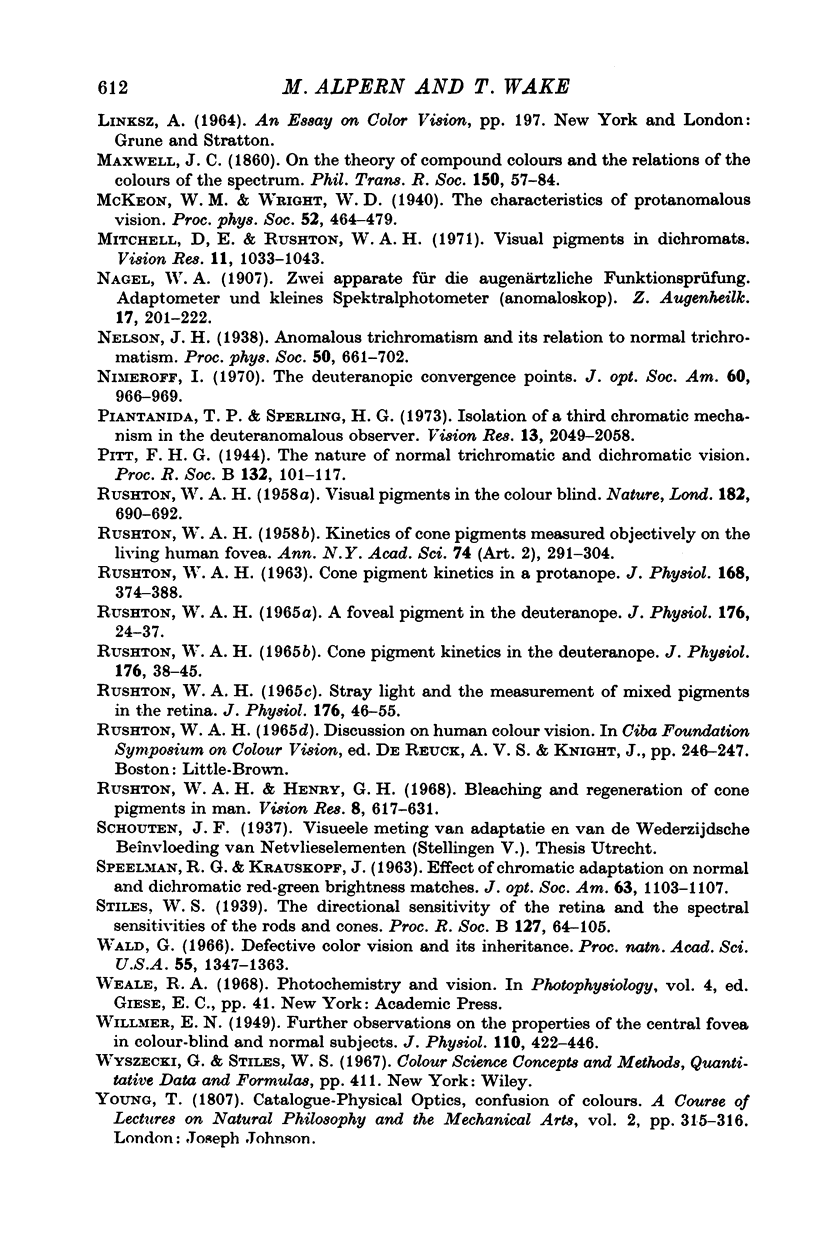
Selected References
These references are in PubMed. This may not be the complete list of references from this article.
- Alpern M., Maaseidvaag F., Oba N. The kinetics of cone visual pigments in man. Vision Res. 1971 Jun;11(6):539–549. doi: 10.1016/0042-6989(71)90075-7. [DOI] [PubMed] [Google Scholar]
- Alpern M., Mindel J., Torii S. Are there two types of deuteranopes? J Physiol. 1968 Dec;199(2):443–456. doi: 10.1113/jphysiol.1968.sp008662. [DOI] [PMC free article] [PubMed] [Google Scholar]
- Alpern M., Moeller J. The red and green cone visual pigments of deuternomalous trichromacy. J Physiol. 1977 Apr;266(3):647–675. doi: 10.1113/jphysiol.1977.sp011786. [DOI] [PMC free article] [PubMed] [Google Scholar]
- Alpern M., Pugh E. N., Jr Variation in the action spectrum of erythrolabe among deuteranopes. J Physiol. 1977 Apr;266(3):613–646. doi: 10.1113/jphysiol.1977.sp011785. [DOI] [PMC free article] [PubMed] [Google Scholar]
- Alpern M., Torii S. The luminosity curve of the deuteranomalous fovea. J Gen Physiol. 1968 Nov;52(5):738–749. doi: 10.1085/jgp.52.5.738. [DOI] [PMC free article] [PubMed] [Google Scholar]
- Alpern M., Torii S. The luminosity curve of the protanomalous fovea. J Gen Physiol. 1968 Nov;52(5):717–737. doi: 10.1085/jgp.52.5.717. [DOI] [PMC free article] [PubMed] [Google Scholar]
- Alpern M. What is it that confines in a world without color? Invest Ophthalmol. 1974 Sep;13(9):648–674. [PubMed] [Google Scholar]
- Bowmaker J. K., Loew E. R., Liebman P. A. Variation in the lambdamax of rhodopsin from individual frogs. Vision Res. 1975 Aug-Sep;15:997–1003. doi: 10.1016/0042-6989(75)90242-4. [DOI] [PubMed] [Google Scholar]
- Hecht S., Shlaer S. THE COLOR VISION OF DICHROMATS : I. WAVELENGTH DISCRIMINATION, BRIGHTNESS DISTRIBUTION, AND COLOR MIXTURE. J Gen Physiol. 1936 Sep 20;20(1):57–82. doi: 10.1085/jgp.20.1.57. [DOI] [PMC free article] [PubMed] [Google Scholar]
- Hood C., Rushton W. A. The Florida retinal densitometer. J Physiol. 1971 Aug;217(1):213–229. doi: 10.1113/jphysiol.1971.sp009567. [DOI] [PMC free article] [PubMed] [Google Scholar]
- Judd D. B. Fundamental studies of color vision from 1860 to 1960. Proc Natl Acad Sci U S A. 1966 Jun;55(6):1313–1330. doi: 10.1073/pnas.55.6.1313. [DOI] [PMC free article] [PubMed] [Google Scholar]
- Le Grand Y. About the photopigments of colour vision. Mod Probl Ophthalmol. 1972;11:186–192. [PubMed] [Google Scholar]
- Le Grand Y. Photopigments des cônes HUMAINS. Doc Ophthalmol. 1969;26:257–263. doi: 10.1007/BF00943983. [DOI] [PubMed] [Google Scholar]
- Mitchell D. E., Rushton W. A. Visual pigments in dichromats. Vision Res. 1971 Oct;11(10):1033–1043. doi: 10.1016/0042-6989(71)90110-6. [DOI] [PubMed] [Google Scholar]
- Nimeroff I. Deuteranopic convergence point. J Opt Soc Am. 1970 Jul;60(7):966–969. doi: 10.1364/josa.60.000966. [DOI] [PubMed] [Google Scholar]
- Piantanida T. P., Sperling H. G. Isolation of a third chromatic mechanism in the deuteranomalous observer. Vision Res. 1973 Nov;13(11):2049–2058. doi: 10.1016/0042-6989(73)90181-8. [DOI] [PubMed] [Google Scholar]
- RUSHTON W. A. A FOVEAL PIGMENT IN THE DEUTERANOPE. J Physiol. 1965 Jan;176:24–37. doi: 10.1113/jphysiol.1965.sp007532. [DOI] [PMC free article] [PubMed] [Google Scholar]
- RUSHTON W. A. CONE PIGMENT KINETICS IN THE DEUTERANOPE. J Physiol. 1965 Jan;176:38–45. doi: 10.1113/jphysiol.1965.sp007533. [DOI] [PMC free article] [PubMed] [Google Scholar]
- RUSHTON W. A. CONE PIGMENT KINETICS IN THE PROTANOPE. J Physiol. 1963 Sep;168:374–388. doi: 10.1113/jphysiol.1963.sp007198. [DOI] [PMC free article] [PubMed] [Google Scholar]
- RUSHTON W. A. Kinetics of cone pigments measured objectively on the living human fovea. Ann N Y Acad Sci. 1959 Nov 12;74(2):291–304. doi: 10.1111/j.1749-6632.1958.tb39552.x. [DOI] [PubMed] [Google Scholar]
- RUSHTON W. A. STRAY LIGHT AND THE MEASUREMENT OF MIXED PIGMENTS IN THE RETINA. J Physiol. 1965 Jan;176:46–55. doi: 10.1113/jphysiol.1965.sp007534. [DOI] [PMC free article] [PubMed] [Google Scholar]
- RUSHTON W. A. Visual pigments in the colour blind. Nature. 1958 Sep 13;182(4637):690–692. doi: 10.1038/182690a0. [DOI] [PubMed] [Google Scholar]
- Rushton W. A., Henry G. H. Bleaching and regeneration of cone pigments in man. Vision Res. 1968 Jun;8(6):617–631. doi: 10.1016/0042-6989(68)90040-0. [DOI] [PubMed] [Google Scholar]
- WILLMER E. N. Further observations on the properties of the central fovea in colour-blind and normal subjects. J Physiol. 1949 Dec;110(3-4):422–446. doi: 10.1113/jphysiol.1949.sp004450. [DOI] [PMC free article] [PubMed] [Google Scholar]
- Wald G. Defective color vision and its inheritance. Proc Natl Acad Sci U S A. 1966 Jun;55(6):1347–1363. doi: 10.1073/pnas.55.6.1347. [DOI] [PMC free article] [PubMed] [Google Scholar]


